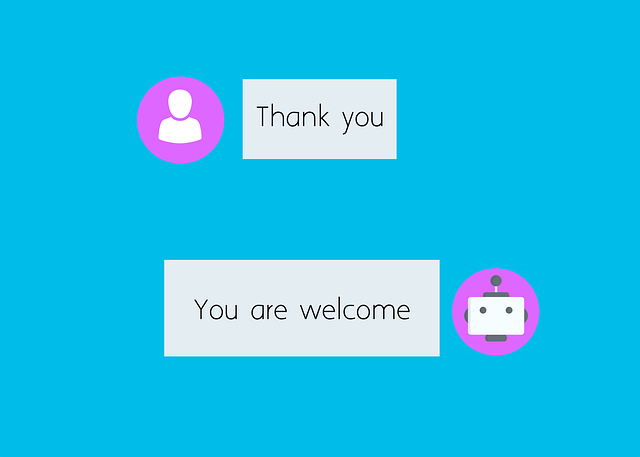AI chatbots have evolved from rigid rule-based systems to intelligent conversational companions, driven by advancements in machine learning (ML) and natural language processing (NLP). These modern chatbots use sophisticated algorithms to understand context, interpret user intent, and generate human-like responses, covering a broad range of topics. Integrating ML and NLP allows them to learn from interactions, adapt to new information, and provide personalized experiences across various sectors like customer service and healthcare. Future trends include AI chatbots becoming intelligent partners that understand nuances in language and emotional cues, further enhancing user experiences through contextual conversations.
The evolution of AI chatbots has transformed them from rule-based bots to adaptive, learning companions. This journey highlights advancements in machine learning and natural language understanding (NLU), enabling AI chatbots to engage in more nuanced, human-like conversations. As these technologies continue to mature, the future promises personalized and contextual interactions, blurring the line between human and machine. Discover how AI chatbots are revolutionizing communication and becoming integral parts of our daily lives.
- Evolution of AI Chatbots: From Rule-Based Systems to Adaptive Companions
- Unlocking Advanced Capabilities: Machine Learning and Natural Language Understanding
- The Future of Human-AI Interaction: Personalized and Contextual Conversations
Evolution of AI Chatbots: From Rule-Based Systems to Adaptive Companions

The evolution of AI chatbots has transformed the way we interact with technology, shifting from rigid rule-based systems to more adaptive and conversational companions. Early AI chatbots were designed with a set of predefined rules and responses, often limiting their ability to handle complex or unexpected user queries. These rule-based bots followed a script, providing predetermined answers based on specific triggers. While functional for simple tasks, they lacked the flexibility and intelligence to engage in natural language conversations.
With advancements in machine learning and natural language processing, AI chatbots have evolved into adaptive companions that can learn from user interactions. Modern chatbots use sophisticated algorithms to understand context, interpret intent, and generate human-like responses. They can now handle a broader range of topics, adapt to different conversational styles, and even develop their own personalities. This shift enables more engaging and personalized interactions, making AI chatbots valuable assistants in various sectors, from customer service to healthcare.
Unlocking Advanced Capabilities: Machine Learning and Natural Language Understanding

As AI chatbots evolve, the integration of machine learning (ML) and natural language understanding (NLU) has unlocked advanced capabilities, enabling them to go beyond rule-based systems. ML algorithms empower these chatbots to learn from vast datasets, adapt to new information, and continuously improve their performance. This allows for more nuanced and contextually relevant responses, as the AI can now interpret user intent with greater accuracy.
NLU further enhances the chatbot’s ability to comprehend human language, enabling it to handle complex queries and engage in more natural conversations. By understanding the subtle nuances of language, including synonyms, idioms, and sentiment, these chatbots can provide personalized and meaningful interactions, elevating the user experience to new heights.
The Future of Human-AI Interaction: Personalized and Contextual Conversations

The future of human-AI interaction promises a paradigm shift, evolving from rule-based bots to intelligent companions that learn and adapt. AI chatbots are no longer confined to rigid scripts; they are becoming sophisticated partners capable of engaging in personalized and contextual conversations. By leveraging machine learning algorithms, these chatbots can understand nuances in language, interpret emotional cues, and recall previous interactions, creating a dynamic and intuitive user experience.
This evolution is driven by the need for more natural and meaningful communication between humans and machines. As AI chatbots integrate into daily life, from customer service to mental health support, their ability to provide tailored responses based on individual needs will become increasingly vital. Contextual conversations enable these chatbots to offer relevant information, empathize with users’ emotions, and even foster a sense of companionship, marking a significant step towards more human-like interactions with technology.
